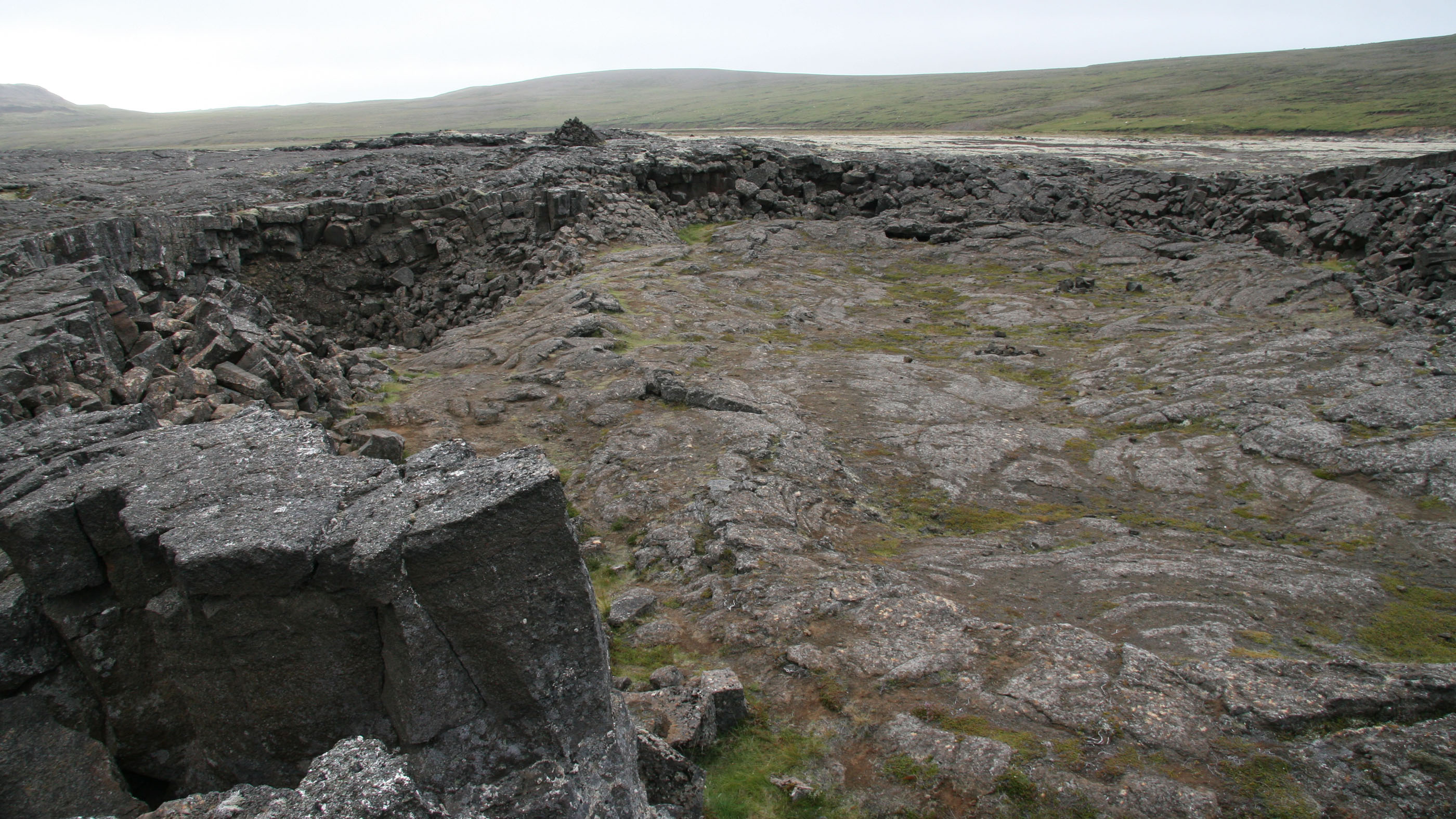Vikings created a massive boat in this volcanic cave to ward off the apocalypse

Archaeologists have discovered the remains of rare artifacts from the Middle East in an Icelandic cave that the Vikings associated with Ragnarök, an end-times event in which the gods would be killed and the world engulfed in flames.
The cave is located by a volcano that erupted almost 1,100 years ago. At the time of that eruption, the Vikings had recently colonized Iceland. "The impacts of this eruption must have been unsettling, posing existential challenges for Iceland's newly arrived settlers," a team of researchers wrote in a paper published recently in the Journal of Archaeological Science.
Archaeological work shows that after the lava cooled, the Vikings entered the cave and constructed a boat-shaped structure made out of rocks. Within this structure, the Vikings would have burned animal bones, including those of sheep, goat, cattle, horses and pigs, at high temperatures as a sacrifice. This may have been done in an effort to avert Ragnarok.
Related: Fierce fighters: 7 secrets of Viking seamen
Near the structure, archaeologists discovered 63 beads, three of which came from Iraq, said Kevin Smith, deputy director and chief curator of the Haffenreffer Museum of Anthropology at Brown University, who leads the team excavating the cave. The team also found remains of orpiment, a mineral from eastern Turkey, near the stone structure. This mineral was used at the time to decorate objects, but very few examples have been found in Scandinavia. "Finding it inside this cave was a great shock," Smith said.
Historical records indicate that the Vikings associated the cave with Surtr, a giant in Norse mythology who would ultimately cause the series of events known as Ragnarök. According to Viking mythology, "the world would end when Surtr, an elemental being present at the world's creation, would kill the last of the gods in the battle of Ragnarök and then engulf the world in flames," the team wrote in the paper.
Cave mystery
The archaeologists don't know why such rare goods from as far away as the Middle East were left in the cave. The Vikings traveled as far as the Middle East and these goods may have made their way to Iceland through trade routes.
Get the world’s most fascinating discoveries delivered straight to your inbox.
But one possibility is that they were meant to appease Surtr, in hopes that he would refrain from destroying the world. Another possibility is that the goods were meant to strengthen Freyr, a Viking fertility god who fought Surtr.
Related: Photos: Viking outposts possibly found in Canada
In the Ragnarök story, Freyr dies fighting Surtr and is unable to stop the end of the world. The presence of numerous animal bones — animals being part of a fertile landscape given that they reproduce — supports the idea that the objects were placed in the cave to strengthen Freyr in hopes that he could defeat Surtr and stop Ragnarök, Smith said.
Converting to Christianity
People in Iceland converted to Christianity around 1,000 years ago, and shortly after they stopped depositing objects in the cave. The last objects placed in the boat-shaped stone structure included a "set of scale weights with one in the form of a Christian cross," the team wrote.
However, even when the Icelandic people adopted Christianity, they still associated the cave with the end of the world. One Icelandic tradition considers the cave to be "the place where Satan would emerge on Judgment Day," the team wrote.
Originally published on Live Science.

Owen Jarus is a regular contributor to Live Science who writes about archaeology and humans' past. He has also written for The Independent (UK), The Canadian Press (CP) and The Associated Press (AP), among others. Owen has a bachelor of arts degree from the University of Toronto and a journalism degree from Ryerson University.



